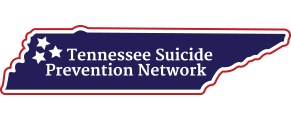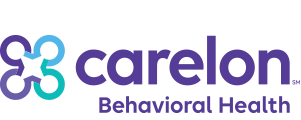No one experiences heroin addiction the same way as someone else. Understanding the signs, symptoms and side effects of heroin addiction is a key component toward starting the recovery journey.
Understanding Heroin Addiction
Learn about heroin addiction and substance abuse
Heroin is a street opioid narcotic that’s derived from morphine, which is a naturally-occurring substance taken from the seed pods of the opium poppy plant. Opiates are a class of legally prescribed medications that offer powerful analgesic properties that help many people who have chronic pain to lead a more productive life. All opiates, including heroin, have a high potential for abuse and physical dependence. People who use heroin often start by snorting or smoking the drug, which produces intense feelings of euphoria and happiness without the risks of injecting the drug. As physical dependence develops, however, people who snort or smoke heroin may begin injecting heroin into their veins as a means for a more powerful high. Class IV drug use – of any IV drug – carries tremendous health risks, including exposure to and infection with blood borne pathogens, including chronic conditions such as HIV/AIDS and hepatitis.
Heroin, called “smack,” “junk,” and “H,” on the streets is highly addictive as it enters the brain, crossing the blood-brain barrier rapidly. Over time, teens and others who abuse heroin develop a tolerance to the drug, meaning that they need more heroin to get high. Addiction to heroin occurs easily, as does physical dependence on the drug. Physical dependence happens when a person’s body adapts to the presence of heroin, and leads to withdrawal symptoms when use is dramatically decreased or stopped. Heroin withdrawal can happen as quickly as two hours after the last drug use.
Heroin is a highly addictive drug that poses incredible danger for adolescents; the abuse of heroin can lead to serious social, educational, psychological, and legal consequences, as well as a multitude of health-related problems.
Statistics
Heroin addiction statistics
According to the 2012 Monitoring the Future study, 0.05% of eighth graders and 0.6% of tenth graders and twelfth graders reported using heroin at least once in the past year. The abuse of prescription opiates may lead some teens to use heroin, as the illegal drug is far easier and cheaper to obtain than prescription drugs. It’s estimated that nearly one-fourth of people who experiment with heroin become addicted.
Causes and Risk Factors
Causes and risk factors for heroin addiction
Addiction is not a well understood condition; researchers can’t explain precisely why one person becomes addicted to heroin while another does not. It’s thought that addiction is the result of a number of genetic, physical, and environmental risk factors working in tandem to produce an addiction. The following are the most commonly cited causes for the development of a heroin addiction:
Genetic: It is now known that addiction has a genetic component. Teens who have a parent or sibling who struggle with addiction are more likely than their peers without a similar history to develop an addiction.
Physical: Chronic use of a substance gradually changes the structure and functioning of the brain, as seen in numerous neuroimaging studies. It’s currently unclear precisely the role these changes play in addiction.
Environmental: It appears that addiction has an environmental component – teens who were raised in an environment in which caregivers or parents used drugs or alcohol are more likely to use drugs and alcohol later in life. In addition, teens who begin to experiment with drugs and alcohol at earlier ages are more likely to later develop an addiction.
Risk Factors:
- Being male
- Having a mental illness, such ADHD
- Peer pressure
- Family not involved in teen’s life
- Anxiety, depression, loneliness
- Use of a highly addictive drug, such as heroin
Signs and Symptoms
Signs and symptoms of heroin addiction
The signs and symptoms of heroin abuse in teens and adolescents will vary wildly from teen to teen based upon individual makeup, length of abuse, presence of mental illnesses, and usage of other drugs. The most common signs and symptoms of heroin abuse in teens includes:
Behavioral Symptoms:
- Neglecting responsibilities at home, such as chores, due to drug use
- Stopping to care for personal hygiene
- Neglecting scholastic and academic responsibilities (i.e. flunking classes) due to heroin use
- Skipping school
- Sudden, inexplicable need for money
- Engaging in secretive behaviors
- Heroin use leading to legal problems
- Sudden changes in friends, favorite hangouts, and hobbies
- Heroin use causing problems in interpersonal relationships
- Wearing long sleeves and pants during warm weather to hide track marks
Physical Symptoms:
- Nodding off suddenly
- Slowed breathing
- Dry mouth
- Flushed skin
- Increased sleeping
- Changes in eating
- Weight loss
- Constant runny nose
- Itching
- Nausea and vomiting
- Deterioration of personal appearance
- Unusual smells on breath, body, or clothing
- Tremors
- Slurred speech
- Impaired coordination
- Appears lethargic or stoned
- Drug paraphernalia around the house – glass pipes, used syringes, rubber tubing
Cognitive Symptoms:
- Decreased ability to problem solve
- Unclear thinking
- Decision-making capabilities decreased
- Disorientation
- Decrease in self-control
- Inability to pay attention in school
- Impairment of short-term memory
Psychosocial Symptoms:
- Bursts of euphoria
- Unexplained personality or attitude changes
- Sudden mood swings
- Angry outbursts
- Irritability
- Lack of motivation
- Increase in paranoia
- Fearfulness
- Anxiety
- Depression
Effects
Effects of heroin addiction
Heroin happens to be one of the most addictive drugs that can be abused and the effects of heroin abuse are incredibly destructive. Many teens who are addicted to heroin may not be aware of the damage that heroin is doing to their life. The most common effects of heroin abuse in teens include:
- Respiratory problems, including pneumonia, depressed breathing, and other pulmonary diseases
- Infection by bloodborne pathogens, leading to chronic conditions such as HIV/AIDS and hepatitis
- Infection at the injection site
- Necrotizing fasciitis, a fast-moving, fatal infection that kills tissue it encounters
- Decreased ability to care for oneself as obtaining, using, and recovering from heroin use takes over life
- Cardiac complications: pericarditis, endocarditis, atherosclerosis
- Complications from additives to the heroin, which can cause blood clots to form in the arteries or veins and allow it to travel to heart, causing heart attack, stroke, or pulmonary embolism
- Coma
- Overdose and death
Overdose & Withdrawal Effects
Effects of heroin overdose and withdrawal
Heroin, a central nervous system depressant, can be fatal if overdose occurs. As no heroin user is able to ascertain precisely what is in the heroin, overdose can happen quite easily. If you suspect you or someone you love is experiencing a heroin overdose, call 911 immediately – this is a medical emergency.
Signs and symptoms of heroin overdose include:
- Skin: Cold, clammy skin and cyanosis – a bluish coloring to the lips and fingernails
- Stomach and Intestines: Spasms of gut, constipation
- Ears, Eyes, Nose, Throat: Dry mouth, pinpoint pupils, discoloration of tongue
- Nervous System: Delirium, disorientation, drowsiness, muscle spasms, coma
- Cardiovascular System: Extreme hypotension, weak, thready pulse
- Airways and Lungs: Slow, labored breathing, shallow breathing, or no breathing
- Death
Most heroin users will do a lot to avoid withdrawal, as the symptoms of withdrawal are exceptionally unpleasant, but not life-threatening. Withdrawal from heroin occurs once a person has become physically dependent upon the drug, so when the drug is not present, the body reacts to its absence. With the proper treatment center, the side effects of withdrawal will be medically-monitored for you or your loved one.
Common symptoms of heroin withdrawal among teens include:
Early heroin withdrawal symptoms:
- Agitation
- Anxiety
- Muscle aches
- Tearing from the eyes and runny nose
- Insomnia
- Sweating
- Yawning
Late heroin withdrawal symptoms:
- Abdominal cramping
- Diarrhea
- Dilated pupils
- Goose bumps
- Nausea and vomiting
Co-Occurring Disorders
Heroin addiction and co-occurring disorders
Addiction rarely occurs in the absence of another mental illness. The most common disorders associated with heroin addiction include:
- Depressive disorders
- Anxiety disorders
- Bipolar disorder
- Other substance abuse
- Alcoholism
- Schizophrenia











